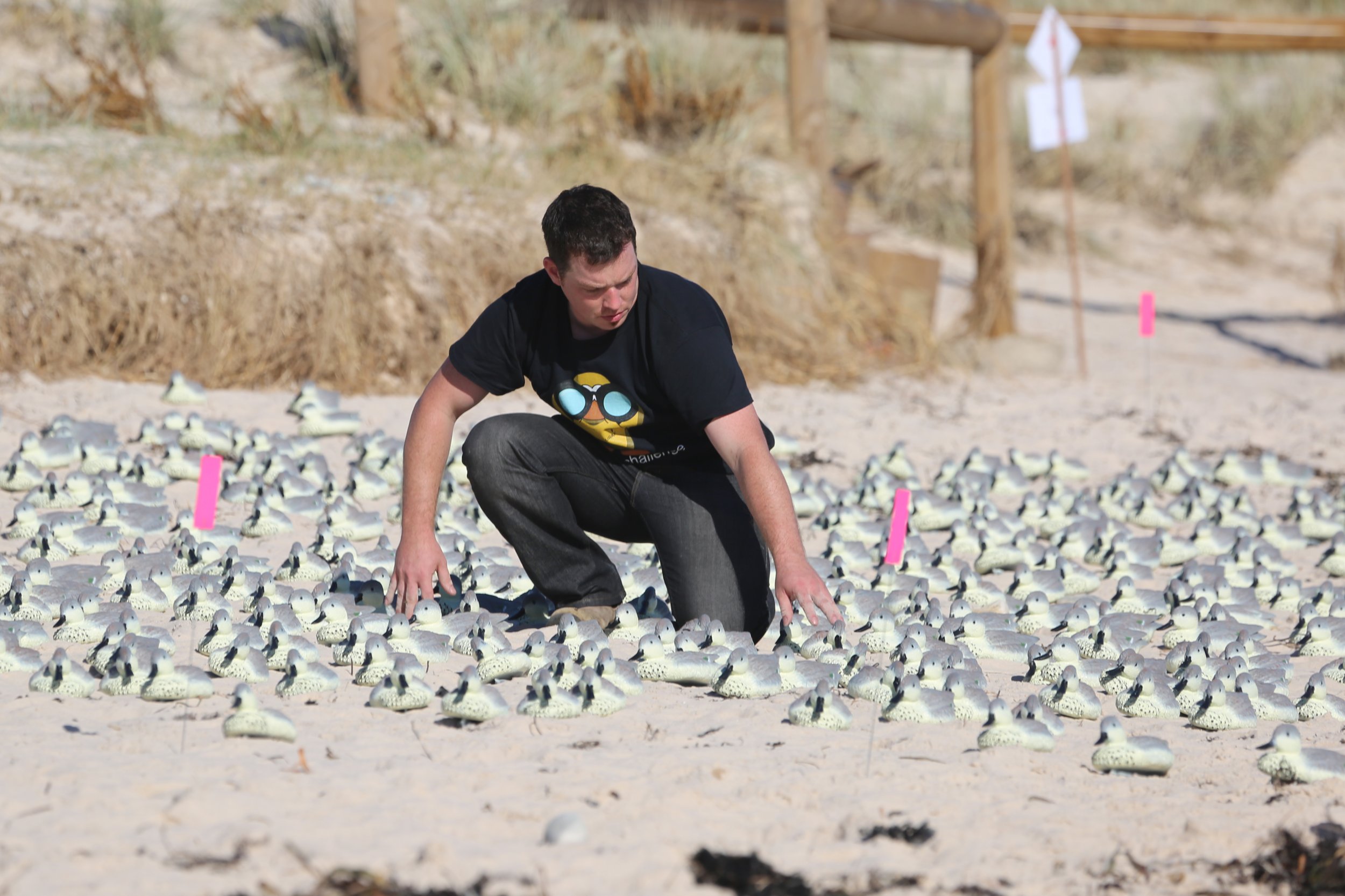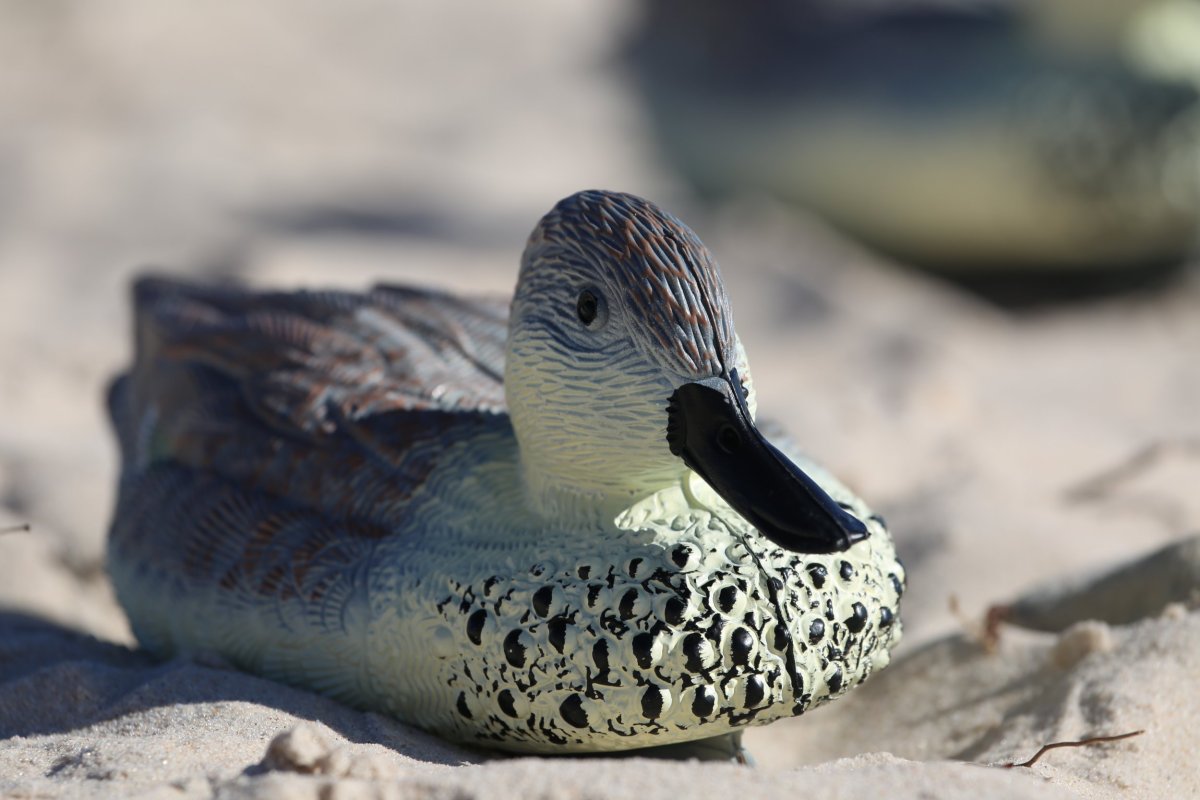
Rubber ducks aren't just for bath time any more—they're now the subject of an ecological study. That's because a team of scientists recruited them as stand-ins for seabirds to test how accurately ecologists can count wildlife populations using drones. And it turns out the drones partnered with a computer algorithm do a pretty good job, according to a new paper published in the journal Models in Ecology and Evolution.
If you weren't expecting to ever see a respected scientific journal publish a study on rubber duck populations, well, that's not surprising. First author Jarrod Hodgson, a doctoral student in ecology at the University of Adelaide in Australia, told Newsweek that it took the group a while to settle on a methodology. They wanted to be able to compare both a drone's count and more traditional methods of taking a census, then vet both against a known population count. That meant being in control of how many birds were out there. The solution they eventually came up with was fake ducks.
"I do remember the day when we finally came up with this plan we thought would work," Hodgson said. They took it to his boss to see if he would approve it. "The look on his face was priceless." But he did agree.
Here's the idea: Use a computer to build a neighborhood map of sorts for a seabird called the greater crested terns, figuring out how closely they nest to each other. Stake out some beachfront and lay out a grid that lets you follow the same density the real birds use to nest. Then put out rubber ducks, about the same size as the terns, to serve as dummies for a colony—one whose members you can't possibly upset, and one whose population tally you know exactly.
That's straightforward, but not necessarily easy. The team gathered all the survey data, for 10 fake seabird colonies, in just one day at a city beach near Adelaide; as you might expect, the hubbub drew a flock of onlookers as well. "We obviously knew it was going to be a lot of work to set up the colonies," Hodgson said. All told, the project used about 2,000 ducks.
Then, test your two census methods: the traditional route of having trained wildlife experts tally with their eyes versus the high-tech approach. The latter meant flying drones overhead to snap photographs, then developing a computer algorithm that, once human volunteers had identified 10 percent of the birds in the photo, could sort out the rest.

They found that the drones combined with the computer algorithm wasn't just a decent substitute for ecologists' eyes, it actually got closer to the real number of birds on the ground. It's a compelling argument for using drones in research, said David Bird, an ornithologist at McGill University in Canada who edits a scientific journal dedicated to drone studies. Population tallies are a crucial piece of ecological information. "Biologists love to count wildlife," he said.
"I don't think that they're necessarily always the best thing to use for studying wildlife but they do have potential," he told Newsweek. One of the key concerns about drones is whether they stress out the animals they fly over, a question scientists are still trying to answer. But the potential for how the technology could affect human health is clear. Bird said that plane and helicopter crashes are the most common cause of death for ecologists in the field. "The less we have to put people in aircraft doing counts of wildlife, the better it is for everybody."
Uncommon Knowledge
Newsweek is committed to challenging conventional wisdom and finding connections in the search for common ground.
Newsweek is committed to challenging conventional wisdom and finding connections in the search for common ground.
About the writer
Meghan Bartels is a science journalist based in New York City who covers the science happening on the surface of ... Read more
To read how Newsweek uses AI as a newsroom tool, Click here.








